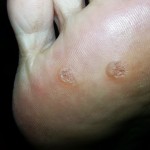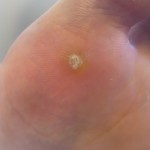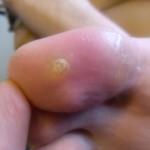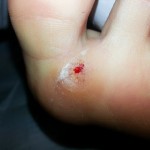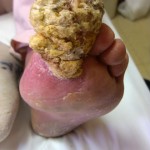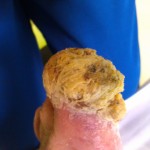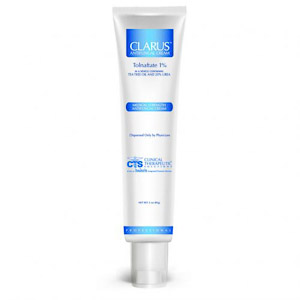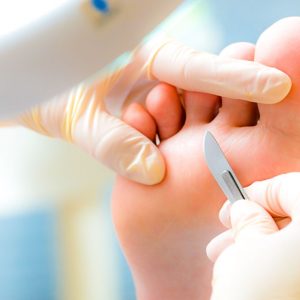Laser Wart Removal
- 2 Mosaic plantar warts notice how the natural skn lines have been displaced and the many small black dots
- Very painful and inflamed plantar wart under the ball of the foot
- Plantar Wart before debridement on the L great toe
Laser wart removal is the only true ablative procedure performed at totally feet podiatry and laser center. Ablative, means that the tissues are destroyed intentionally with the laser. Laser wart removal is very effective. The target is hemoglobin and the dermal cells infected with the virus. The laser is used to cauterize the capillaries (small blood vessels) feeding the virus infected dermal cells and destroy the cells infected with the virus. Virus infected cells require more energy than normal dermal cells because the virus increases their growth rate. For more information on warts and other conditions looking like warts check out the Plantar Wart Page.
Why Laser Wart Removal?
Laser wart removal attacks warts on 2 fronts where other treatments only attack the in 1 way. All of the other treatments focus on destroying the dermal cells that have been hijacked by the virus and that is the only way they attack the virus. Laser wart removal treatments are attacking the hijacked cells like other treatments and destroying the feeder capillaries. This dual attack is the most effective treatment for plantar warts hands down. In my office, I have patients that have been treated by many other conventional therapies with no results, one laser wart treatment and the warts are usually gone. This is not the case for all patients, but I can tell you after more than 15 years of treating warts, this is the best wart treatment.
The Laser Wart Removal Procedure
Laser wart removal treatment is fast and straight forward. Any thickened tissue on the surface of the wart is removed with debridement, and the area is cleaned. Proper debridement requires as much thickened tissue be removed as possible, we do this to the patients tolerance. People with extremely painful warts, may need a local anesthetic for this procedure. Once the area has been prepared, the laser is is used to zap the wart. The actual zap of the wart is much like a bee sting, to most of our patients.
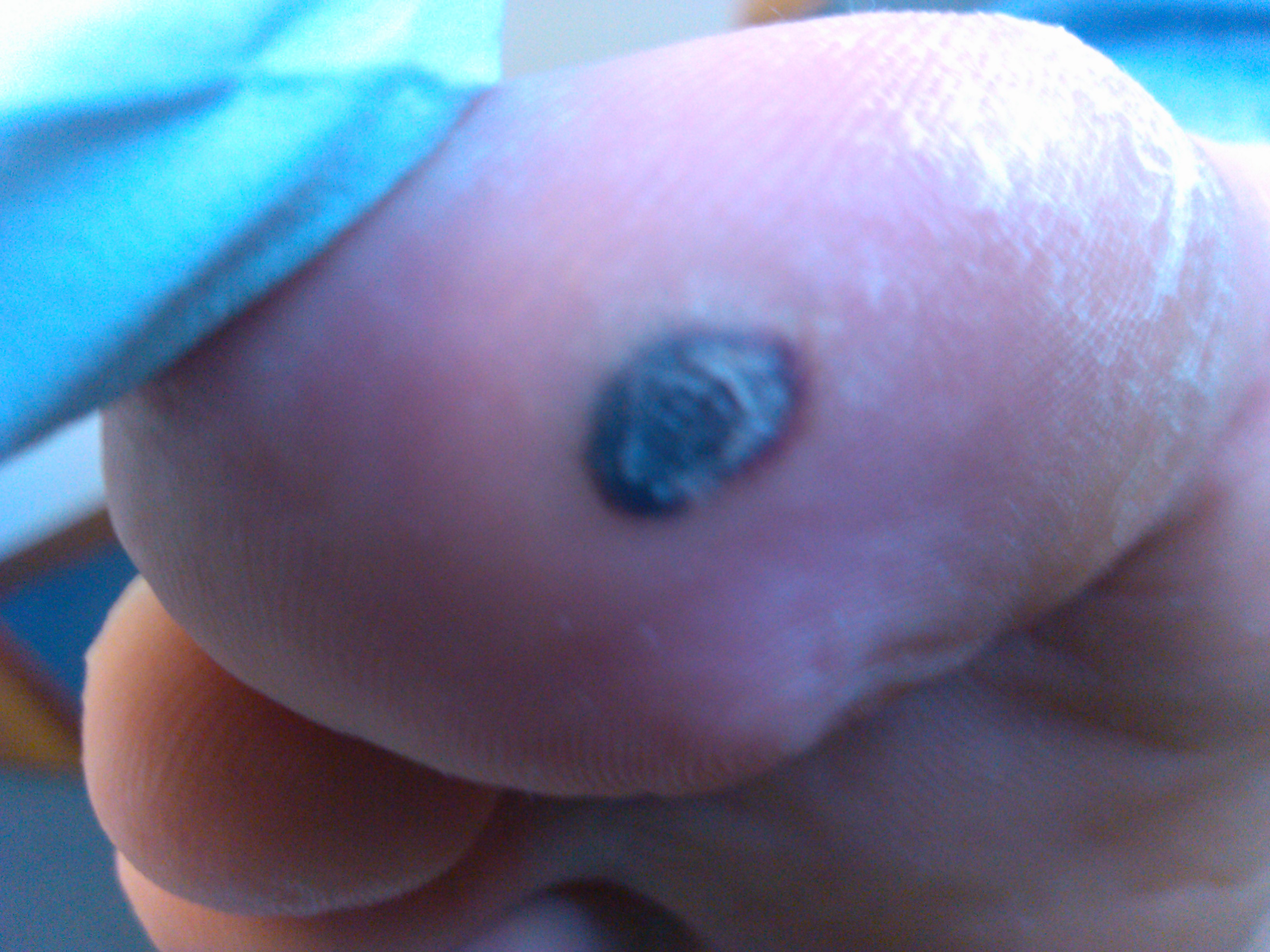
6 days after laser wart treatment
After the treatment a blood blister forms, 1 to 2 weeks after the treatment the blood blister hardens. When the tissue has become hardened it is ready to be removed. Under the hardened blister we normally find completely heeled tissue, however occasionally, with some very large mosaic warts staged or multiple treatments may be required.
In some cases where the warts are on the weight bearing surface of the foot it is necessary to perform some offloading or padding to reduce the risk of “blown out blisters”.
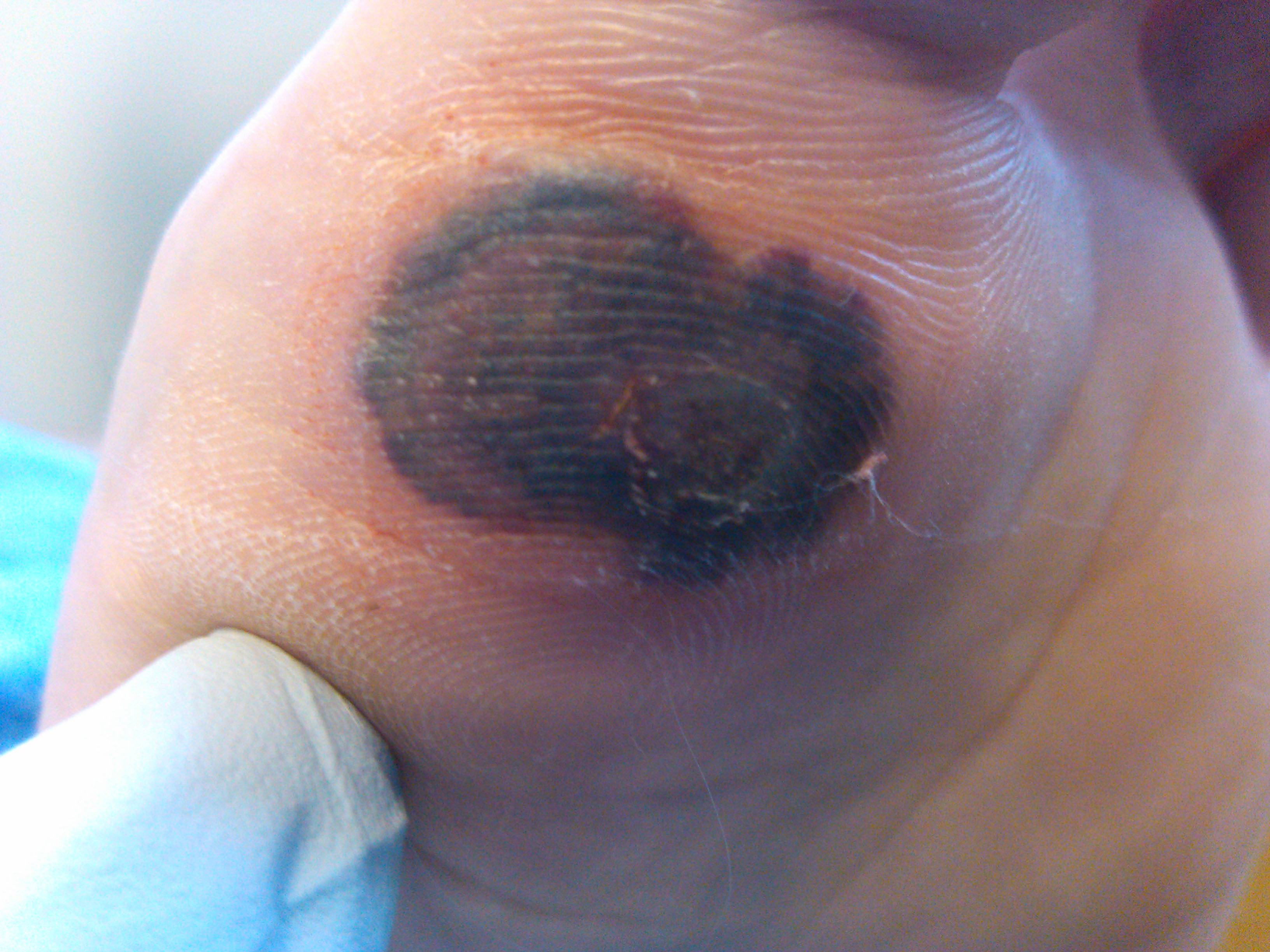
Blown out blister.
Blown out blisters occur when excessive pressure from walking causes the blister to travel into adjacent tissues. It is critical to follow the advice of your podiatrist during the post op treatment.
The Worst Wart I Have Ever Seen
- Suspected varrucous carcinoma pt never followed up for biopsy
I suspected this was a case of Varrucous Carcinoma- patient never followed up for biopsy.
Understanding Lasers and Laser Treatments
There are many important factors when it comes to selecting the right lasers for realistic outcomes of various treatments. NOT all lasers are created equally. There are 4 main characteristics of a laser that need to be assessed to establish the efficacy for a particular type of treatment.
- Fluence– Power over a set time to a set amount of area.Measured in Joules/cm2; Joules = Watts x Time
- Pulse Width– Measures the length of time a laser is exposing the target tissue. This with the fluence, spot size, and wavelength determine how much energy is delivered to the targets.
- Spot Size– Refers to the diameter of the laser beam and helps control the depth the laser will travel through the tissues
- Wavelength- is generated by the materials used to generate the laser beam. This is one of the most important characteristics of the laser because it determines how much energy is absorbed by particular targets in the tissue and how deep the laser will travel through the tissues.
Many companies will claim a high maximum amount of power without stating a spot size or pulse width. Potential patients should make sure they select the right doctor for their treatment. A spot size and wavelength are the most important factors in determining the penetration of the laser in to the tissues. The 1064nm wavelength has one of the best penetrations of any laser on the market, making it very versatile and the choice of many. If the laser is capable of meeting the effective parameters, it can be used to treat hair removal, onychomycosis, spider veins, reticular veins, erythema, skin rejuvenation, scar reduction, and many other conditions.

